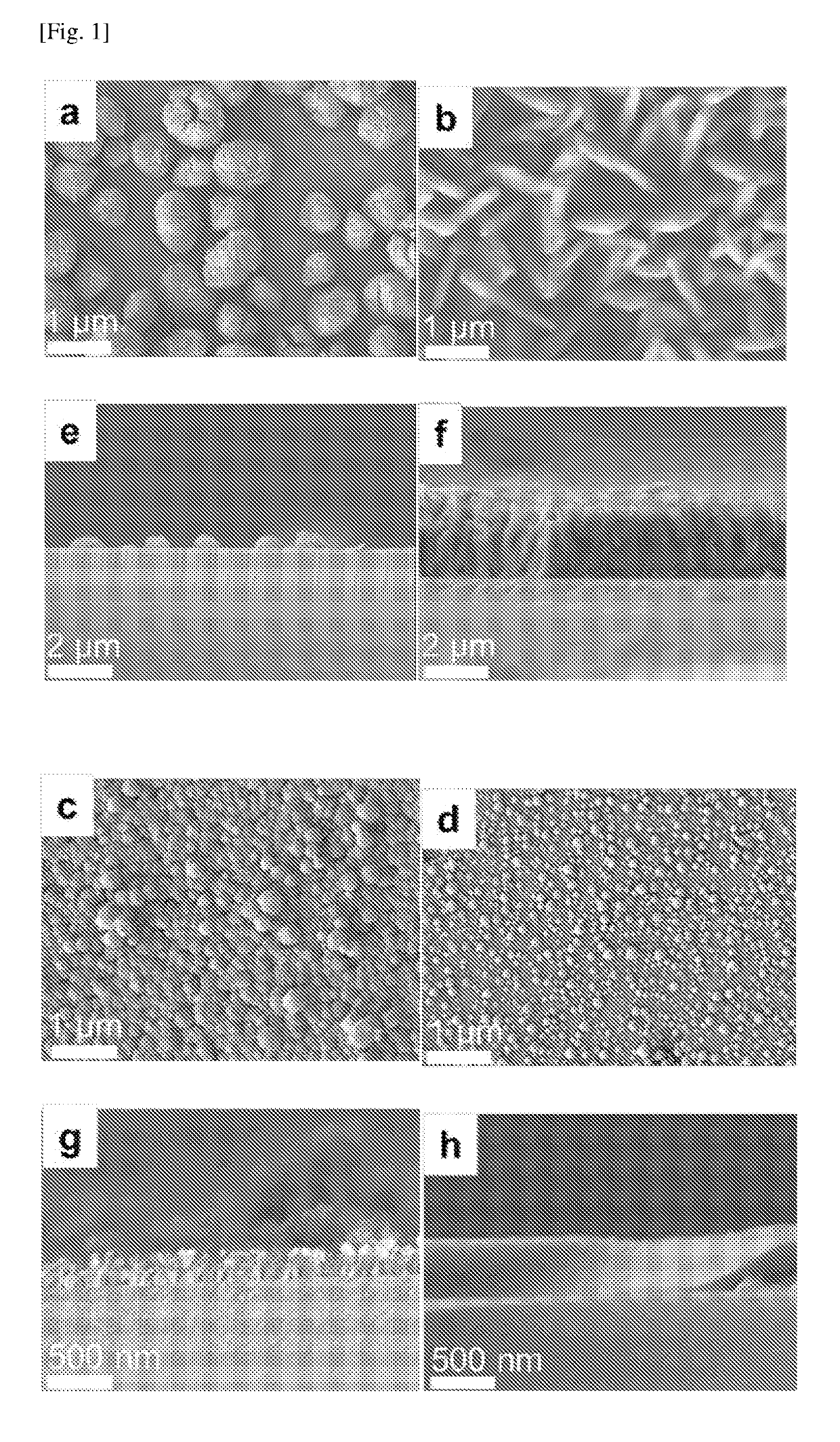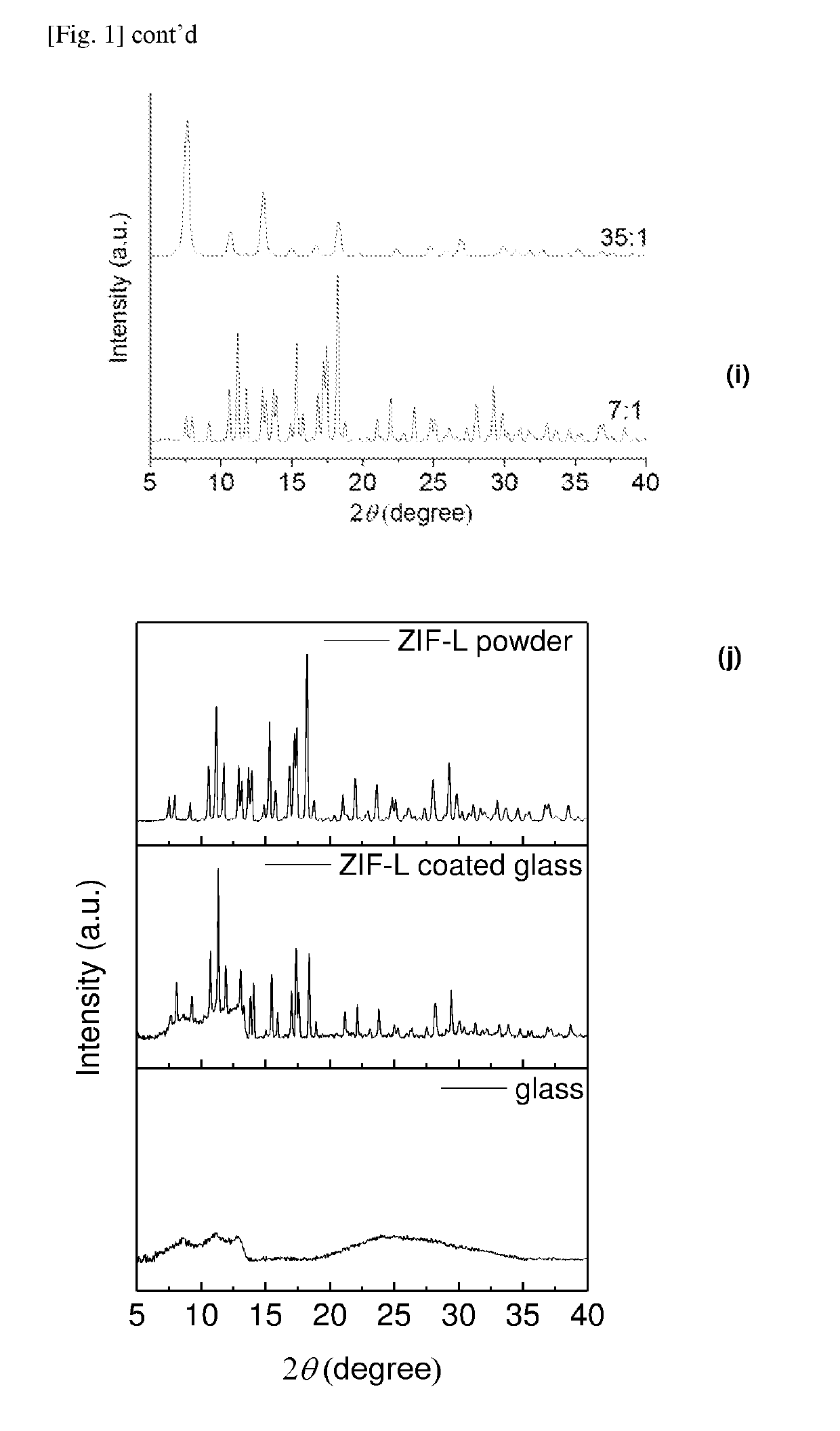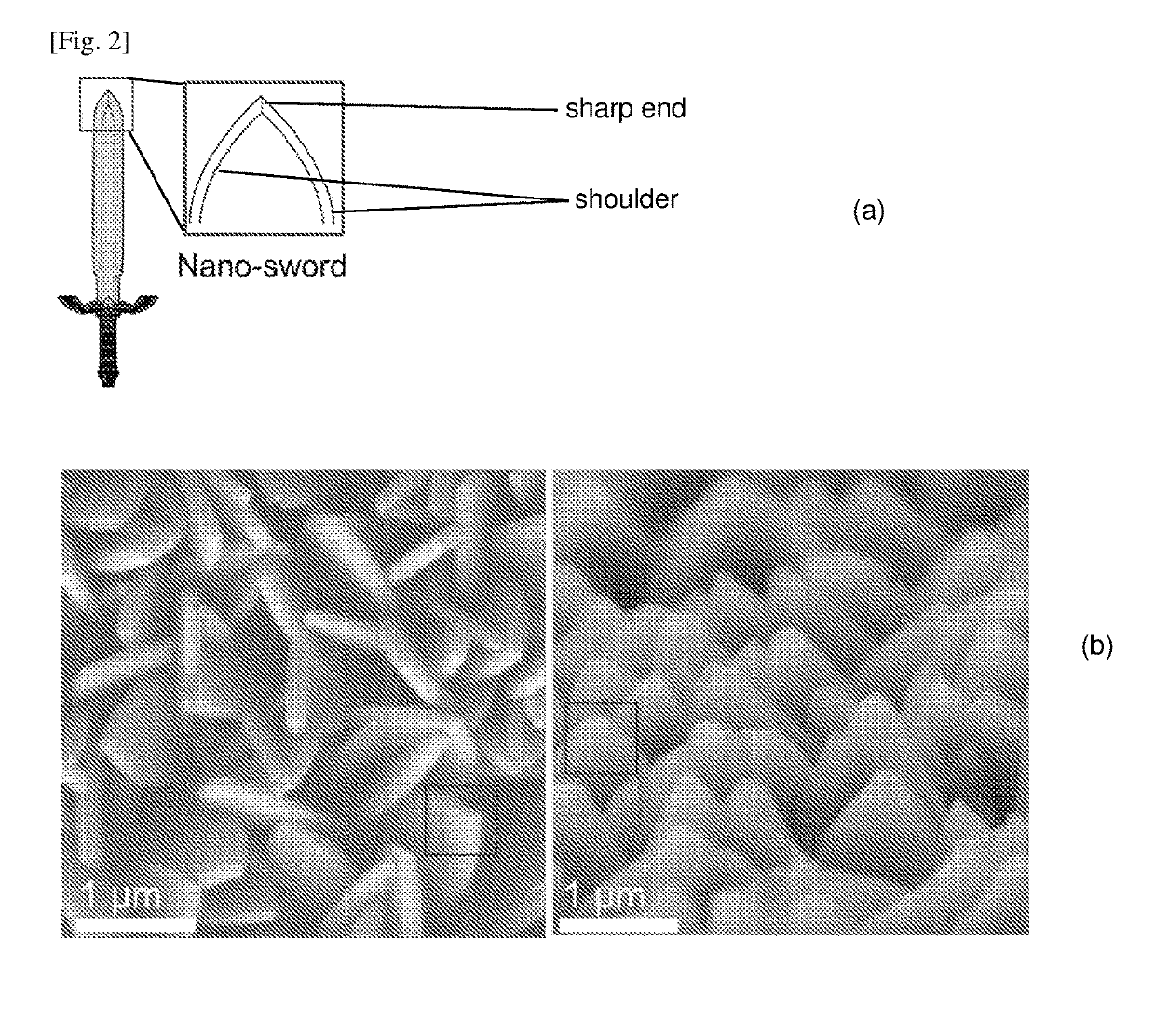Antimicrobial coatings
a technology of antimicrobial coatings and coatings, applied in the field of coatings, can solve the problems of low microbial killing efficacy, poor long-term stability of the coated surface, and growing drug resistance to microbicide agents, and achieve the effect of advantageously economical preparation
- Summary
- Abstract
- Description
- Claims
- Application Information
AI Technical Summary
Benefits of technology
Problems solved by technology
Method used
Image
Examples
example 1
[0114]A zeolitic imidazolate framework (ZIF) was grown directly on normal glass surfaces with 2-methylimidazole (2-Me-Im) as the organic ligand and Zn as the metal.
[0115]The glass surface was placed vertically in a reaction container containing 200.0 ml aqueous solution of 2-Me-Im (0.35 mol / L). 20.0 ml Zn(NO3)2 aqueous solution (0.5 mol / L at a 2-Me-Im:Zn molar ratio of 7:1) was introduced dropwise into the solution. The mixture was stirred at 25° C. for 3 h to obtain a continuous ZIF-L layer. The ZIF-L coated support was washed with ethanol several times to remove any loose powder on the surface. The washed coated support was then dried in an oven at 60° C.
[0116]Surface morphology of the coated surface was investigated using field emission scanning electron microscopy (SEM, JEOL JSM-7400F, Japan) with samples sputter-coated with a 2- to 3-nm layer of platinum to provide a conductive surface.
[0117]The example was repeated with different ratios of 2-Me-Im to Zn—2:1, 35:1 and 70:1.
[011...
example 2
[0128]The steps in Example 1 were repeated for a 2-Me-Im:Zn ratio of 7:1 (resulting in ZIF-L structures), except the surfaces used in this example were varied. In addition to glass as in Example 1, the surfaces used in this example were poly(methyl methacrylate) (PMMA), silicone, filter paper, metal (copper foil), synthetic cellulose fiber (from a disposable face-mask), Teflon tape and wood.
[0129]It was found that ZIF-L could be successfully grown on all of these surfaces. The ZIF-L coatings on these surfaces have similar nano-sword array structures, although with some variations in the array density.
[0130]This is shown in the series of field emission scanning electron micrograph images in FIG. 3. The inset in each of the series of images in FIG. 3 shows the magnified view of the coated substrates. Specifically, FIG. 3a shows ZIF-L nano-sword arrays on PMMA, FIG. 3b shows ZIF-L nano-sword arrays on silicone, FIG. 3c shows ZIF-L nano-sword arrays on glass, FIG. 3d shows ZIF-L nano-sw...
example 3
[0135]In this example, the bactericidal performance of a ZIF-L coated poly(methyl methacrylate) (PMMA) surface against Gram-negative bacteria Escherichia coli (ATCC 8739), Gram-positive bacteria Staphylococcus aureus (ATCC 6538) and the yeast fungus Candida albicans (ATCC 10231) was tested.
[0136]All bacteria and yeast were stored frozen at −80° C., and were grown overnight at 37° C. in Tryptic Soy broth (TSB) prior to experiments. Yeast was grown overnight at 22° C. in Yeast Mold (YM) broth. Subsamples of these cultures were grown for 3 h further and diluted to give an optical density value of 0.07 at 600 nm, corresponding to approx. 3×108 CFU mL−1 (MacFarland's Standard).
[0137]The steps in Example 1 were repeated, except the surface used in this example was a PMMA surface.
[0138]The antimicrobial property of the coated PMMA surface was evaluated using the JIS Z 2801 / ISO 22196 method. Briefly, exponentially growing bacteria with OD600=0.07 was further diluted 100 times and used as te...
PUM
| Property | Measurement | Unit |
|---|---|---|
| height | aaaaa | aaaaa |
| width | aaaaa | aaaaa |
| width | aaaaa | aaaaa |
Abstract
Description
Claims
Application Information
 Login to View More
Login to View More - R&D
- Intellectual Property
- Life Sciences
- Materials
- Tech Scout
- Unparalleled Data Quality
- Higher Quality Content
- 60% Fewer Hallucinations
Browse by: Latest US Patents, China's latest patents, Technical Efficacy Thesaurus, Application Domain, Technology Topic, Popular Technical Reports.
© 2025 PatSnap. All rights reserved.Legal|Privacy policy|Modern Slavery Act Transparency Statement|Sitemap|About US| Contact US: help@patsnap.com



